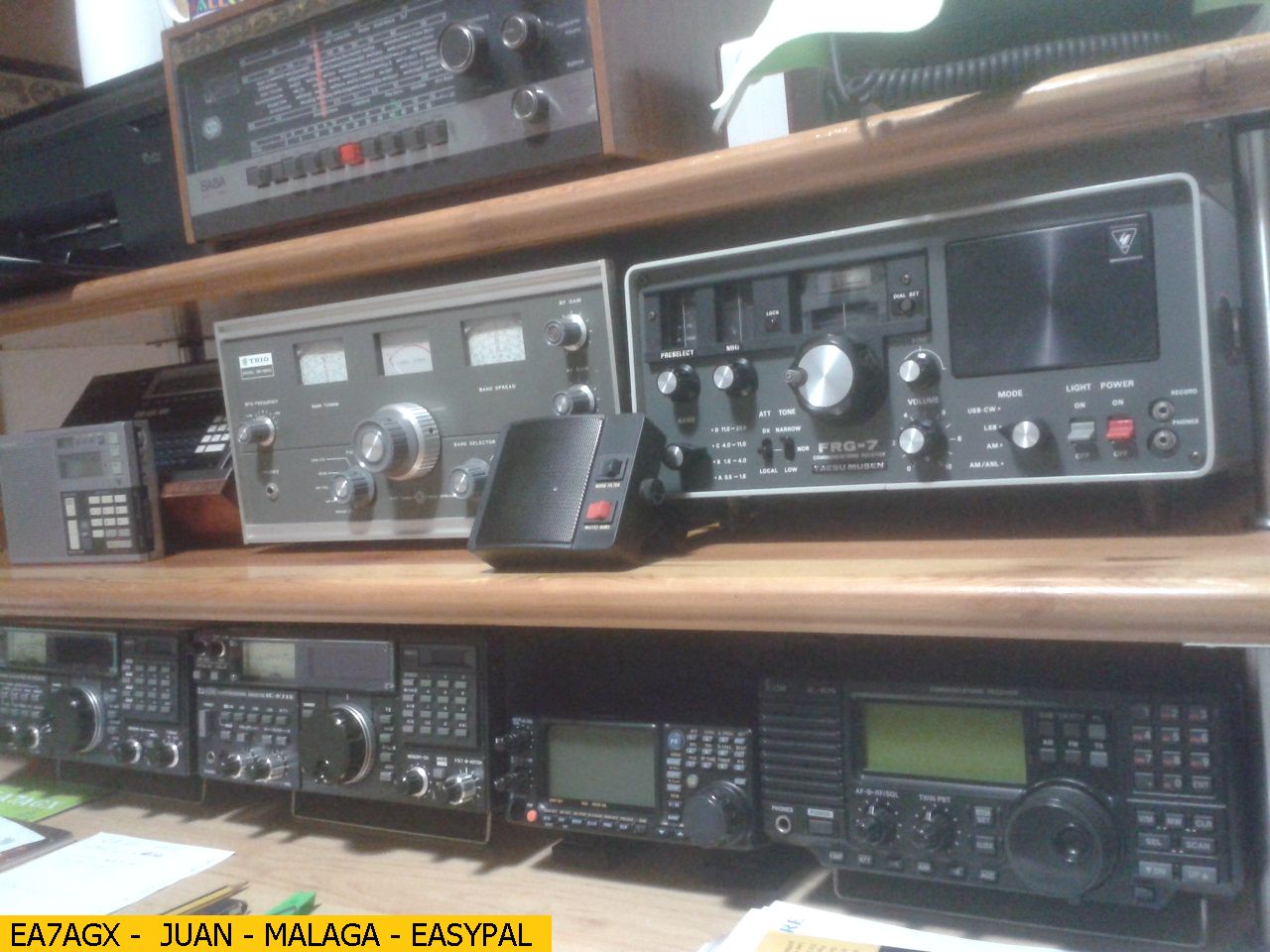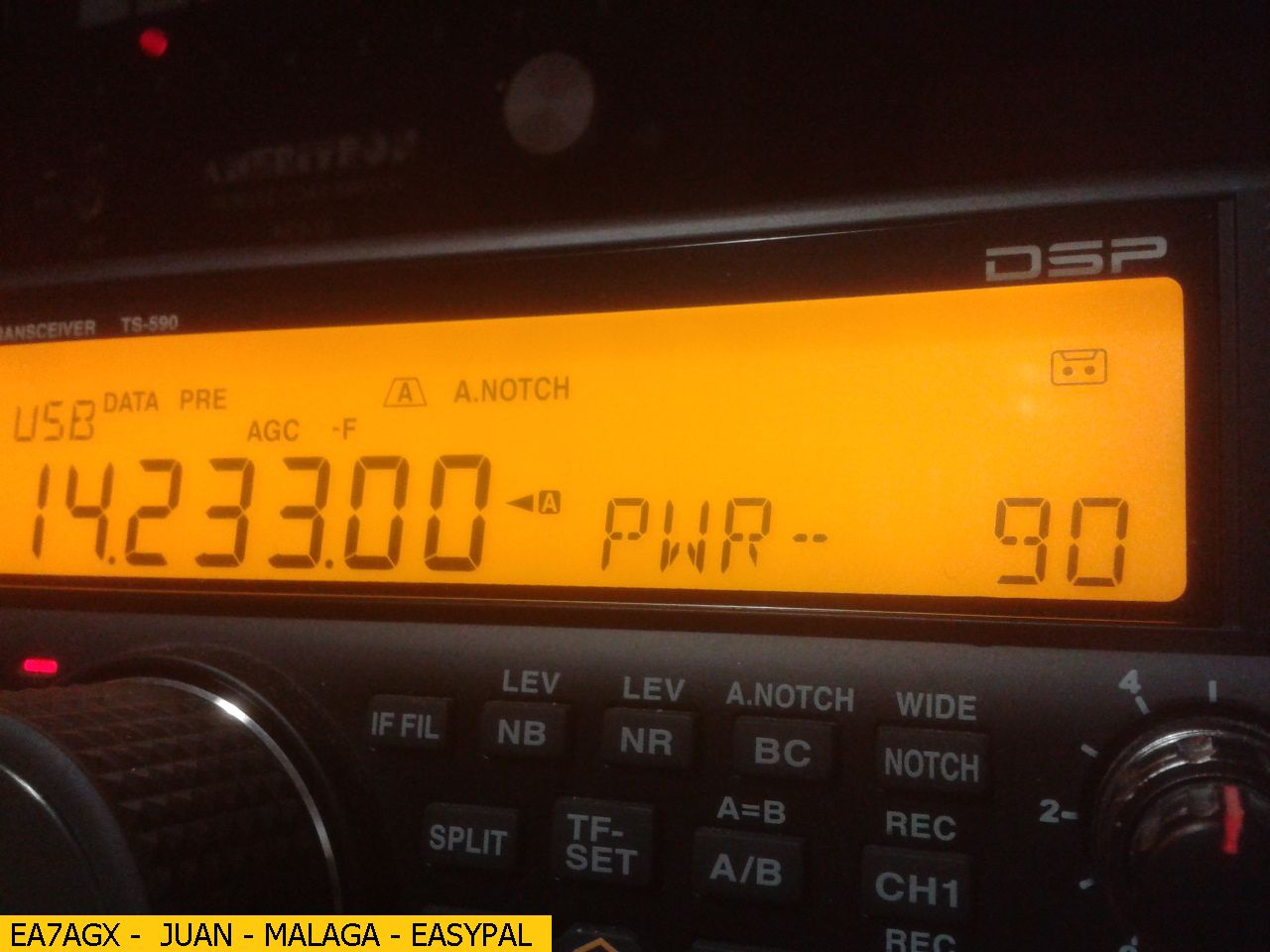Sending Pic:205x76C;

More digital text and images on VOA Radiogram:
http://voaradiogram.net
www.rhci-online.net/radiogram/radiogram.htm
██╗ ██╗██████╗ ██████╗ ██████╗ █████╗ ██████╗ ██╗ ██████╗ ██████╗ ██████╗ █████╗ ███╗ ███╗ ██║ ██╔╝██╔══██╗██╔════╝ ██╔══██╗██╔══██╗██╔══██╗██║██╔═══██╗██╔════╝ ██╔══██╗██╔══██╗████╗ ████║ █████╔╝ ██████╔╝██║ ██████╔╝███████║██║ ██║██║██║ ██║██║ ███╗██████╔╝███████║██╔████╔██║ ██╔═██╗ ██╔══██╗██║ ██╔══██╗██╔══██║██║ ██║██║██║ ██║██║ ██║██╔══██╗██╔══██║██║╚██╔╝██║ ██║ ██╗██████╔╝╚██████╗ ██║ ██║██║ ██║██████╔╝██║╚██████╔╝╚██████╔╝██║ ██║██║ ██║██║ ╚═╝ ██║ ╚═╝ ╚═╝╚═════╝ ╚═════╝ ╚═╝ ╚═╝╚═╝ ╚═╝╚═════╝ ╚═╝ ╚═════╝ ╚═════╝ ╚═╝ ╚═╝╚═╝ ╚═╝╚═╝ ╚═╝
|
RSID: <<2015-02-14T12:31Z
MFSK-64 @
6095000+1500>>
Eric's fleet of classic American cars includes this 1978 Mercury
Marquis Brougham with a 5.8 liter engine ...
Sending Pic:205x76C;

More digital text and images on VOA Radiogram:
http://voaradiogram.net
██╗ ██╗ ██████╗ █████╗ ██████╗ █████╗ ██████╗ ██╗ ██████╗ ██████╗ ██████╗ █████╗ ███╗ ███╗ ██║ ██║██╔═══██╗██╔══██╗ ██╔══██╗██╔══██╗██╔══██╗██║██╔═══██╗██╔════╝ ██╔══██╗██╔══██╗████╗ ████║ ██║ ██║██║ ██║███████║ ██████╔╝███████║██║ ██║██║██║ ██║██║ ███╗██████╔╝███████║██╔████╔██║ ╚██╗ ██╔╝██║ ██║██╔══██║ ██╔══██╗██╔══██║██║ ██║██║██║ ██║██║ ██║██╔══██╗██╔══██║██║╚██╔╝██║ ╚████╔╝ ╚██████╔╝██║ ██║ ██║ ██║██║ ██║██████╔╝██║╚██████╔╝╚██████╔╝██║ ██║██║ ██║██║ ╚═╝ ██║ ╚═══╝ ╚═════╝ ╚═╝ ╚═╝ ╚═╝ ╚═╝╚═╝ ╚═╝╚═════╝ ╚═╝ ╚═════╝ ╚═════╝ ╚═╝ ╚═╝╚═╝ ╚═╝╚═╝ ╚═╝
RSID: <<2015-02-14T16:01Z
MFSK-32 @
17860000+1500>>
Welcome to program 98 of VOA Radiogram from the Voice of America.
I'm Kim Andrew Elliott in Washington.
Here is the lineup for today's program, all in MFSK32 except
where noted:
1:59 Program preview (now)
3:07 New satellite will observe space weather*
10:19 Russia may block web anonymizers*
17:08 North Korea tightens controls at China border*
24:01 Museum of Mathematics logo
27:08 Closing announcements
28:09 Bonus mode of the week: BPSK63F
* with image
Please send reception reports to radiogram@voanews.com.
And visit voaradiogram.net.
Twitter: @VOARadiogram
VOA NEWS
New Satellite to Enhance Monitoring of Space Weather
Rosanne Skirble
February 11, 2015
A new satellite is on a 1.5 million-kilometer, 110-day journey
toward the sun. Once it reaches its orbit, DSCOVR - the Deep
Space Climate Observatory - will replace an aging craft to
monitor space weather.
DSCOVR will be fixed in orbit at L1, the so-called Lagrange point
where the gravitational pull of the sun and of Earth cancel each
other out. From this distant outpost, it will document the
continuous stream of charged solar particles.
Life on Earth is mostly protected from those particles by the
planet's magnetic field and atmosphere. But Thomas Berger,
director of the National Oceanic and Atmospheric Administration's
Space Weather Prediction Center in Boulder, Colorado, said
large-scale eruptions from the sun, called coronal mass
ejections, can still be dangerous.
"Those are really, really large magnetic clouds that are expelled
from the sun at very, very high speeds ... and when those impact
the Earth, that's like a tsunami or a hurricane impacting the
Earth in terms of space weather," he said.
Violent space weather can disable electric power grids, knock out
satellites, and interrupt radio signals and aviation
communications systems. This year marks the peak of the 11-year
solar cycle, when extreme weather on the sun can most affect life
on Earth.
Berger said full recovery from a really bad solar storm could
take four to 10 years and cost between $1 trillion and $2
trillion, according to a recent report published by the National
Research Council.
"There really is not much we can do about it, given that the sun
is a gigantic star and we are just a tiny little planet in its
orbit. However," he pointed out, "NOAA's job and the Space
Weather Prediction Center's job in particular is to predict these
phenomena and give people the watches, warnings and alerts that
they need to take mitigation action."
A step ahead of the storm
DSCOVR will sit like a buoy in space. It will do the same job as
NASA's 17-year old Advanced Composition Explorer (ACE), which has
worked long beyond its design life.
DSCOVR will ensure there is no gap in real-time solar
observations. Berger said the satellite data will provide 15 to
60 minutes of advanced warning to managers on the ground.
"Fifteen to 60 minutes is enough time for power grid operators to
take mitigation actions, such as spooling up other generators to
balance loads," he explained. "It's enough time for satellite
operators to take their satellites into safe mode if necessary.
So, it's enough time."
But space weather forecasters want more. Berger said projects
are in the works to extend those alerts. "It would be great if we
even had something even farther towards the sun, and that's
possible using perhaps solar sail technologies in the future, but
right now what we can do is put something in that gravitational
sweet spot and leave it there. That's the DSCOVR satellite."
ACE will stay in service
DSCOVR, like ACE, will issue planetary scale predictions and
warnings. NOAA plans to use ACE data, too, as long as the aging
satellite survives.
"We can tell you something is coming in," Berger said. "However,
with the ACE in the future and the upcoming models we're
developing, we'll be able to tell you which regions of the Earth
will be more or less susceptible to these incoming solar storms."
This will mean that for the first time, warnings will advise not
only that a magnetic storm is heading toward Earth, but where it
will strike.
DSCOVR also carries two NASA Earth-observing instruments that
will gather a range of aerosol and ozone measurements for other
science work. NOAA will operate the satellite and process the
data. The mission is a joint partnership between NOAA, NASA and
the U.S. Air Force.
http://www.voanews.com/content/new-satellite-enhance-monitoring-space-weather/2639763.html
See also:
http://www.nesdis.noaa.gov/DSCOVR/
Image: Artist's concept of the DSCOVR satellite in space ...
Sending Pic:156x107C;
|
original via shortwave |
denoised |
Internet |
|
|
|
 |
This is VOA Radiogram from the Voice of America.
Please send reception reports to radiogram@voanews.com.
From Radio Free Europe/Radio Liberty:
The War Against Tor: Russia Takes Aim At Popular Web Anonymizer
By Tom Balmforth
February 11, 2015
MOSCOW - The Russian authorities apparently have a new enemy in
their crosshairs: web tools that give users online anonymity.
On February 5, lawmaker Leonid Levin proposed blocking so-called
web anonymizers including the most popular program, called Tor.
Tor -- an acronym for "The Onion Router" -- is encryption
software that allows users to stealthily surf the Internet and
bypass locally-imposed web restrictions.
Levin's proposal won quick backing from Roskomnadzor, Russia's
state communications watchdog.
Roskomnadzor's press secretary, Vadim Ampelonsky, derided Tor
users as "ghouls" and likened the program to a hangout for
criminals. He seconded the call for it to be blocked, saying it
is "technically complex, but solvable."
Internet analysts, however, are skeptical.
"It's impossible to block Tor," said Irina Levova, a Moscow-based
Internet analyst.
Levova added that the authorities could feasibly block all
encrypted Internet traffic. But such a move would wreak havoc on
online banking and commerce. They could also address the problem
legislatively, by banning software that bypasses web filters.
With 143,000 users, Russia is the third-highest user of Tor in
the world, after the United States and Germany.
To conceal users' locations and usage, the Tor browser, which can
be downloaded free of charge, directs Internet traffic through a
worldwide volunteer network consisting of thousands of relays.
It is popular among privacy advocates, private investigators,
journalists, bloggers, hackers, and criminals.
In Russia, Tor has the additional use of helping dissidents
bypass web censorship amid the country's creeping online
clampdown.
Under legislation purportedly to protect minors from suicide,
sexual exploitation, and drug abuse, authorities have obtained
the power to extra-judicially block websites.
The legislation was used to deny many Russians access to three
opposition news portals -- Kasparov.Ru, Grani.Ru, Yezhednevny
Zhurnal.
Opposition leader Aleksei Navalny has also had his blog blocked,
while popular liberal radio station Ekho Moskvy was briefly
blocked on some Internet service providers.
The first official call to block Tor came from the Federal
Security Service back in June 2013.
Anatoly Kucherena, an FSB-affiliated lawyer, told the pro-Kremlin
daily Izvestia at the time that lawmakers should impose penalties
for creating websites that allow users to bypass the web black
list.
And, in June 2014, the Interior Ministry announced a tender on
the government procurement website offering 3.9 million rubles
for research that would allow authorities to identify Tor users.
According to the Tor Project's website, the number of Russian
users surged after the tender was announced.
And this, said Internet analyst Levova, illustrates the dilemma
the authorities face in confronting Tor: the more they try to
block it, the more popular it becomes.
And Tor users say they are not concerned about all the scrutiny.
Mika, a 30-year-old Tor user who runs a smartphone software
company, has been using the program to access banned opposition
websites since 2014.
"How are you supposed to block constantly changing proxies?,"
said Mika, who declined to give his last name.
http://www.rferl.org/content/russia-blocking-tor-anonymous-internet/26842171.html
Image: Tor logo ...
Sending Pic:187x105C;
|
original via shortwave |
denoised |
Internet |
|
|
|
|
This is VOA Radiogram from the Voice of America.
Please send reception reports to radiogram@voanews.com.
From Radio Free Asia:
North Korea Tightens Controls at China Border in Bid to Curb
Information
By Richard Finney
2015-02-10
North Korea has over the last two years tightened controls at its
border with China, stepping up its monitoring of unauthorized
phone calls and harshly cracking down on smuggling networks
helping people to flee the country, Human Rights Watch said on
Monday.
The increased security measures appear mainly to be aimed at
blocking information flows moving in both directions across the
border of the reclusive, nuclear-armed state, Human Rights Watch
(HRW) deputy Asia Director Phil Robertson said in a statement.
"North Korea feels threatened by news and images of the outside
world seeping into the country and now is trying to reassert its
control by going after people bringing in the information,"
Robertson said.
Hereditary leader Kim Jong Un is also "trying to silence news of
his systemic and pervasive rights crimes by going after the
messengers, such as people with connections in South Korea or
those who can help North Koreans flee there," he said.
Quoting from interviews conducted with nine North Koreans who
live outside the country but maintain contact with people left
behind, Robertson cited "brutal punishments" applied to persons
caught escaping the country or sharing restricted information.
The more draconian steps include the increased use of political
prison camps, or kwanliso, rather than regular detention
facilities, as places of confinement, HRW says. ...
Border clampdown
Fear of capture by the authorities has now deterred many on both
sides of the border who were formerly active in smuggling money
and commodities into North Korea and in helping North Koreans
escape to the South, HRW said.
"I lost most of my contacts in North Korea and in China since
2013," said one woman, adding that with many of the people she
had worked with now held in the camps, her smuggling activities
have decreased over the last two years by 80 to 90 percent.
"After Kim Jong Un [took power], anyone caught talking to the
South is sent to political prison camps," said another broker,
who told HRW he had left North Korea in August 2013 "out of
fear."
"There are more crackdowns both inside the military and outside,"
he said. "Soldiers and high-ranking officials are also punished
[if they let people cross to China and allow smuggling], so they
don't want to help anymore."
Meanwhile, North Korean authorities have stepped up efforts to
track down "unauthorized phone calls" made in border areas on
Chinese service provider networks, North Korean escapees told HRW
in recent interviews.
"The phones have no signal in the cities anymore," one man said,
adding, "I have heard they even have mobile technology to find
the exact location of the caller even after you hang up."
"I used to call from my living room, but later I had to go high
up in the mountains in the middle of the night and I was scared
to talk for more than a minute or two," he said.
Another source told HRW that she used to get calls from North
Korea "at all times of the day" and would talk for long periods
without fear of detection.
Now, the number of those calls has shrunk by about 60 percent
over the last three years, she said.
http://www.rfa.org/english/news/korea/information-02102015161148.html
See also:
http://www.hrw.org/news/2015/02/09/north-korea-harsher-punishments-contact-south
Image: Bridge across the Yalu River from Dandong, China, to
North Korea ...
Sending Pic:165x135C;
|
original via shortwave |
denoised |
Internet |
|
|
|
|
I ran out of time to include this VOA News story ...
Is America in a Math Crisis?
But here is link ...
http://www.voanews.com/content/is-america-in-a-math-crisis/2637496.html
And here is the logo of the National Museum of Mathematics in New
York, momath.org ...
Sending Pic:219x222C;
|
original via shortwave |
denoised |
Internet |
|
|
|
|
Please send reception reports to radiogram@voanews.com.
And visit voaradiogram.net.
Twitter: @VOARadiogram
Thanks to colleagues at the Edward R. Murrow shortwave
transmitting station in North Carolina.
I'm Kim Elliott. Please join us for the next VOA Radiogram.
This is VOA, the Voice of America.
RSID: <<2015-02-14T16:27Z
BPSK-63F @ 17860000+1500>>
Thank you for decoding the modes on VOA Radiogram.
www.rhci-online.net/radiogram/radiogram.htm
|
QTH: |
D-06193 Petersberg (Germany/Germania) |
|
|
Ant.: |
Dipol for 40m-Band & Boomerang Antenna 11m-Band |
|
|
RX for RF: |
FRG-100B + IF-mixer & ICOM IC-R75 + IF-mixer |
|
|
Software IF: |
con STUDIO1 - Software italiano per SDR [S-AM-USB/LSB] |
|
|
Software AF: |
||
|
OS: |
German XP-SP3 with support for asian languages |
German W7 32bit + 64bit |
|
PC: |
MEDION Titanium 8008 (since 2003) [ P4 - 2,6 GHz] |
MSI-CR70-2MP345W7 (since2014) [i5 -P3560 ( 2 x 2,6GHz) ] |
DRM-images - received via EASYPAL/DSSTV on 14233kHz/USB (FRG-100 / Dipol for ~12 MHz)
Here are some pics of EA7AGX [JUAN ANTONIO GALLEGO FERRER, 29130 ALHAURIN DE LA TORRE (Málaga), Spain] received in the last time:
|
|
|
|
|
 |
|
|
.jpg) |
|
|
 |
|
|
 |
|
|
 |
|
|
 |
|
|
 |
|
|
 |
|
|
 |
|
|
.jpg) |
|
|
 |
|
|
.jpg) |
|
|
|
|
|
 |
|
|
 |
|
|
 |
|
|
 |
|
|
 |
|
|
 |
|
|
|